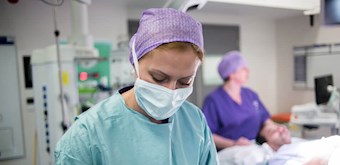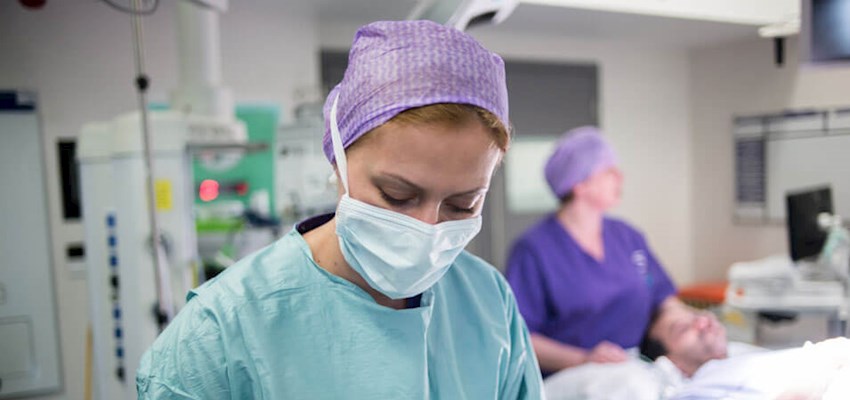Parastomal hernia
Parastomal hernia causes and symptoms
If you’ve noticed a bulge developing close to your stoma, our experts at HCA UK can help
About
A stoma is an opening on your abdomen made during surgery to allow stools (poo) or urine to pass out of the body. By making a cut in the muscle to create the stoma, it can cause a weakness, allowing the intestines to push through and create a bulge. This is known as a stoma - or parastomal - hernia.
Need to know
-
Symptoms of a parastomal hernia icon plus
Parastomal hernias affect people who have had a stoma made on their abdomen during surgery. Common symptoms include:
- a bulge or lump in the area around the stoma
- a dull ache around the hernia, which often worsens when you are active
- constipation and diarrhoea as a result of the stoma not functioning properly
- the stoma becoming smaller (retracting) as the bulge develops
If you are using a colostomy pouch, the hernia may make it more difficult to change and even cause it to leak.
In rare circumstances, parts of the intestine may become trapped in the hernia, causing obstruction or strangulation which will require emergency surgery. -
Diagnosis icon plus
Your GP or consultant will examine the lump and affected area, which is often enough to identify a hernia. In some cases it may be necessary to carry out an ultrasound scan. This is a painless and non-invasive procedure, but it will help to confirm the diagnosis and assess how severe it is.
Parastomal hernias are usually more uncomfortable than painful, and therefore generally do not require surgery. Your consultant may consider surgery if the hernia is causing severe pain, but they will discuss the risks involved and determine the best approach for you. -
Potential treatment options icon plus
Patients are often advised to wear a stoma support garment, such as a belt, girdle, pants or boxer shorts.
Many people also find that it helps to do pilates, or other exercises which help to strengthen the core muscles.
If surgery is required, treatment options include:
- open or laparoscopic (keyhole) surgery
- repairing the tissue around the hernia - this is relatively straightforward, but carries a higher risk of the hernia recurring
- re-siting the stoma to another location – this is a bigger operation, but carries a lower risk of the hernia recurring
- a special mesh may be used to strengthen the area and prevent the hernia returning
Our consultants
We're proud to work with leading experts across a range of medical fields, whose skills are matched by their integrity and compassion.




Our facilities
From complex surgery to straightforward procedures, we provide exceptional care across our network of hospitals, outpatient centres and specialist clinics.
Book an appointment
Our team can help with any enquiries or you can make an appointment with one of our experienced consultants.
Call us today
020 7079 4344
This content is intended for general information only and does not replace the need for personal advice from a qualified health professional.